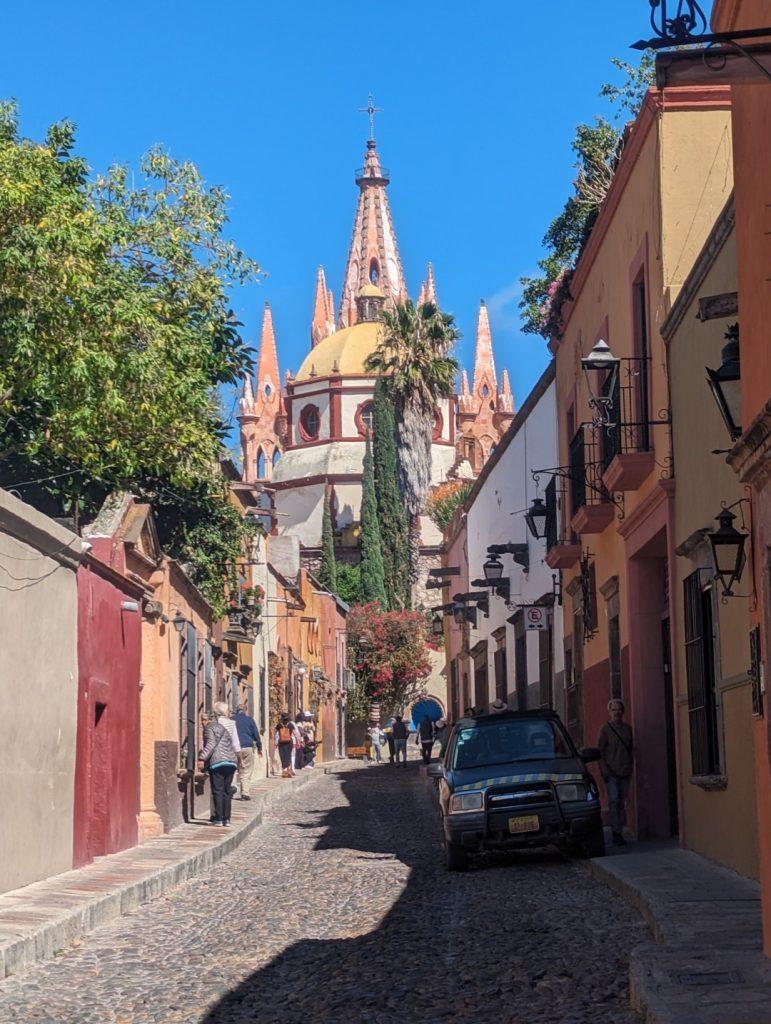
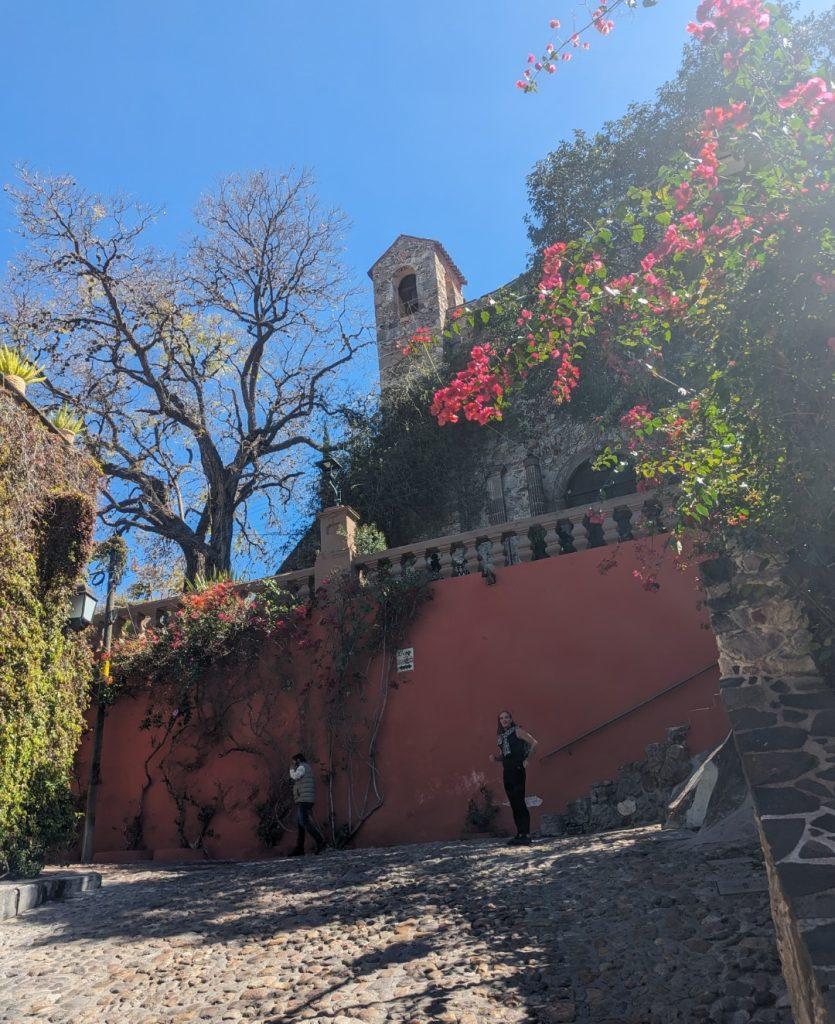
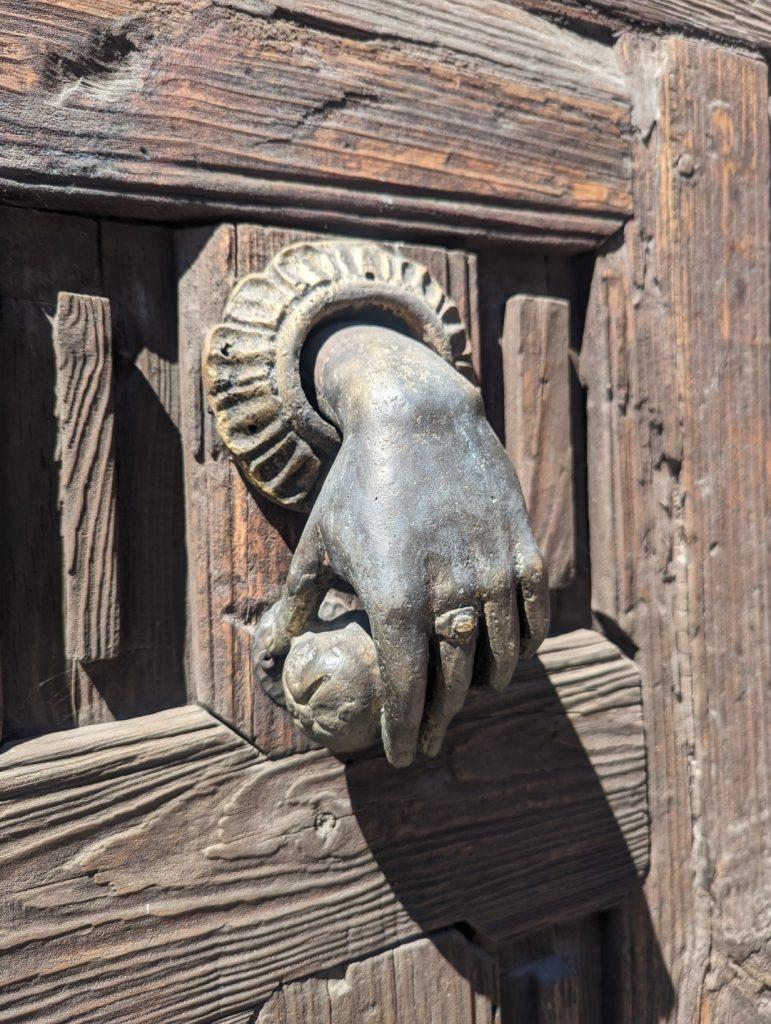
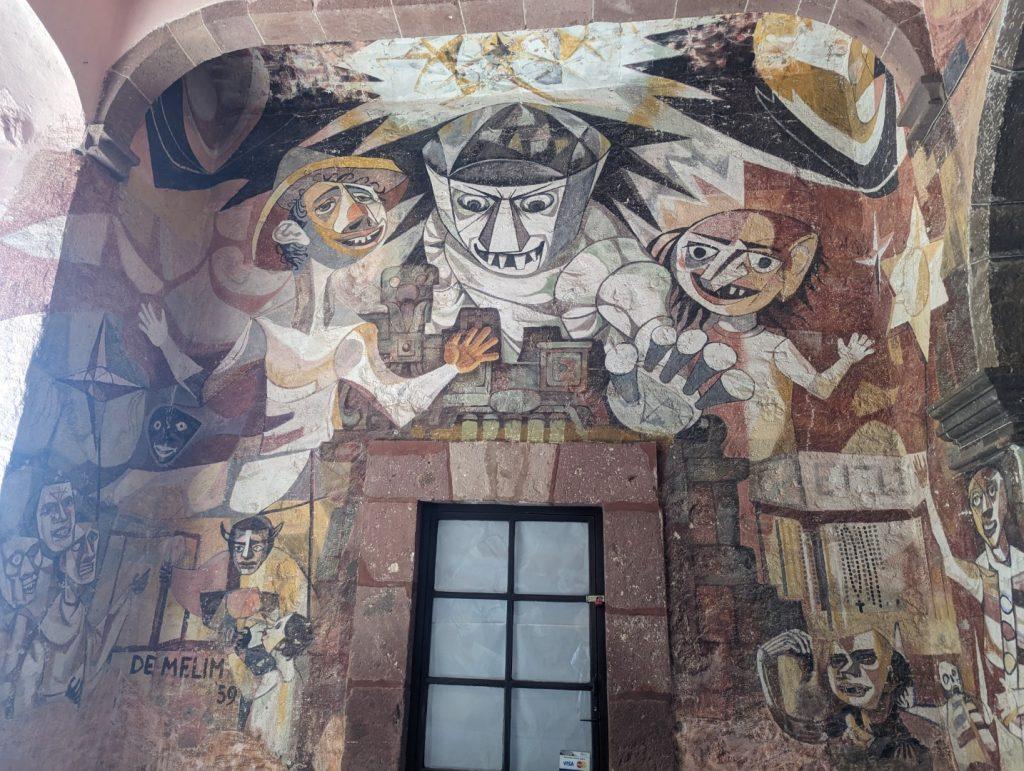
I spent most of my recent week in San Miguel de Allende attending the San Miguel Writers’ Conference & Literary Festival, so I didn’t explore the town thoroughly. Thus, most of this post is about the cycling adventures my husband, John, went on while I was hanging out with writers like Guillermo Arriaga (screenwriter of Babel, among other films), Christina Baker Klein (author of Orphan Train), CS Richardson (Giller-prize finalist novel, All the Colour in the World), Molly Ringwald (who is an author and literary translator as well as being a successful actor), Sylvia Moreno-Garcia (Mexican Gothic), and Chris Pavone (The Expats). Before I get to John’s piece though, a little bit about San Miguel.
About San Miguel de Allende, Mexico
It is is the prettiest (and possibly richest) Mexican city I’ve been to and it has an outstanding art scene. You could easily spend an entire day just taking in the dozens of independent artist studios at La Fabrica la Aurora alone, to say nothing of all the other galleries in town. Nestled in the mountains of Guanajuato, it is (in winter) chilly at night and early in the mornings, but hot and sunny by mid-morning and throughout the afternoon.
San Miguel de Allende’s riches originally came from silver mining. The town was in a good strategic location for outfitting and entertaining those associated with the mining industry. At its peak, in the mid 18th century, San Miguel had a population larger than that of New York (30,000 vs 25,000)!
When mining later slumped and the Mexican War of Independence led to political problems, the population withered. But early in the 20th century it started becoming a home to many artists and authors. It established a school of fine arts and later attracted US military veterans who, under the GI Bill, were allowed to study abroad. Many married locally and/or returned here when they retired.
Now in the snowbird winter months some 30-50% of the population consists of expats (mainly American). They have a huge economic and cultural impact. It feels a bit like being in a Disneyland version of a Mexican/Spanish colonial town, rather than like being in Mexico. I can see the appeal to foreigners — it would be so easy to fit in and make friends — but I suspect that many of the artists who made it so appealing in the first place are being priced out. Real estate listings show many million-dollar-plus houses and even condos for sale! Tales of would-be renters being scammed abound. That said, the vast array of cultural activities would make it tempting as a winter destination for me. For my cyclist and runner husband, though, not so much. Which brings us to…
Cycling in & near San Miguel de Allende
Guest post by John Shaw
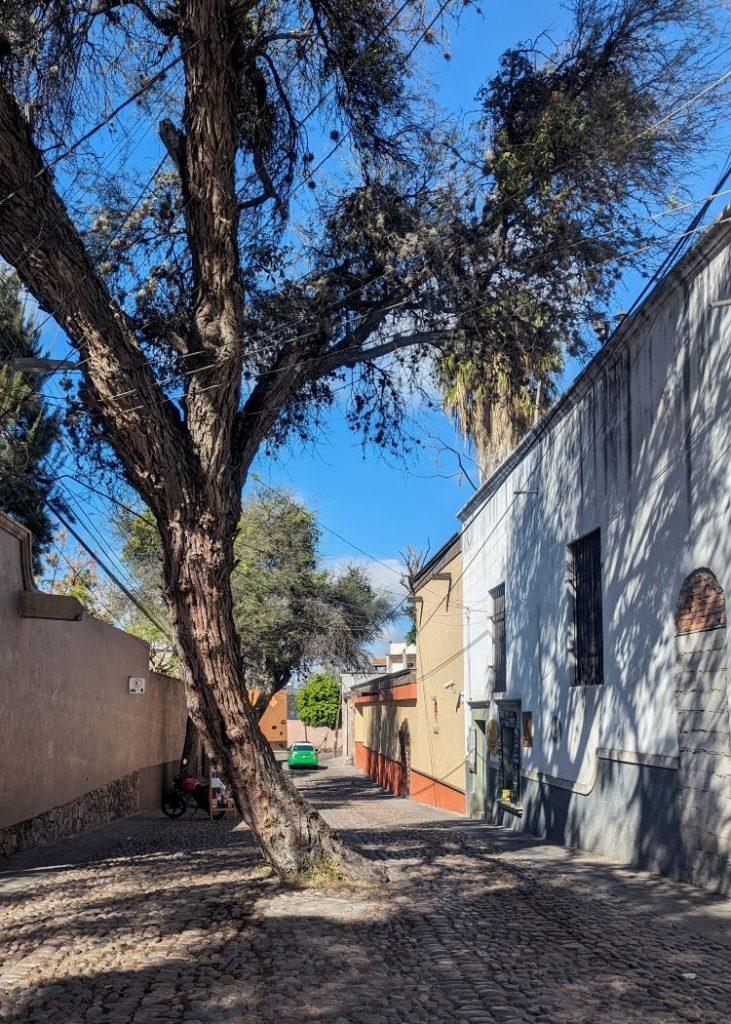
Cycling in and around San Miguel de Allende is not for the faint of heart. There is dense traffic on narrow, steep, and roughly cobbled streets in the historic centre (El Centro). The vibration on the cobbles is bone jarring and hand numbing. In the countryside, there are loose cattle, pueblo dogs, and single-track desert trails equipped with granulated chalky soil, hell bent on causing you to spill, and spike-like thorns that are bound to puncture one of your tires at some point. Don’t rub an arm or a leg against the cacti or shrubs either. Irrespective of variety, there will be pain and probably blood.
So why did I cycle? Well …
San Miguel de Allende is objectively beautiful, whenever you pick your head up from threading the “smoothest” line on the streets and single-track narrow sidewalks. Sixteenth and 17th century buildings; 18th and 19th century houses and streetscapes; squares, parks and public art all abound. It has been a rich city since its founding, strategically placed overlooking fertile farmland along the Camino Real between the silver mines of Guanajuato and Mexico City. Its role was like Edmonton’s for the oilsands. It supplied food, manufactured goods, machinery, equipment, and skilled labour. This created a large middle class and a super-rich and educated elite. El Centro is a UNESCO world heritage site in its entirety! After a period of decline, San Miguel de Allende was discovered by foreign artists and US military veterans who went there to study on the GI Bill during the 20th century and is now a spruced up and polished magnet for cultured gringos escaping the cold!
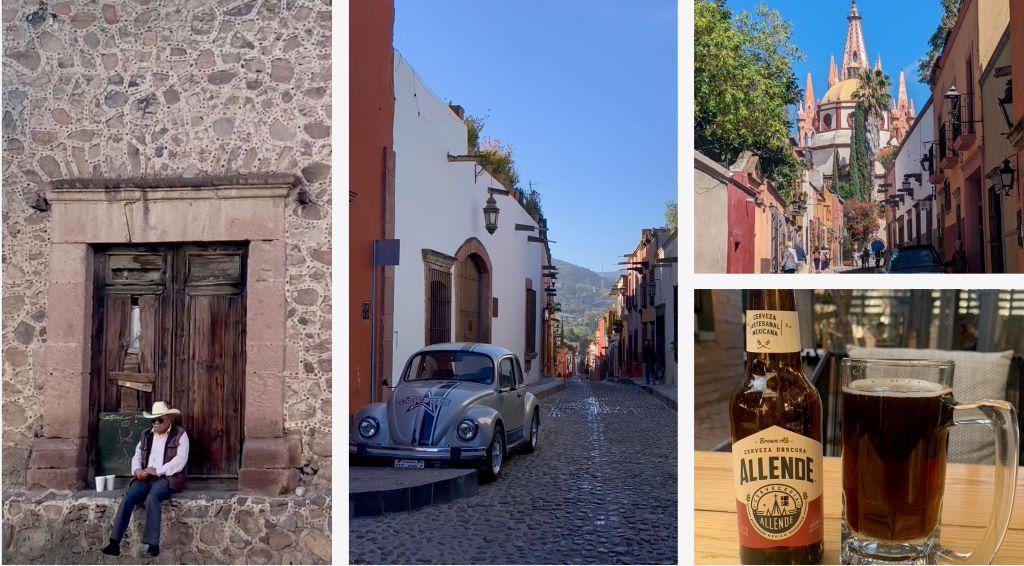
The surrounding region is steeped in pre-Columbian and Spanish colonial history. There are over 100 nearby ancient ruins archaeologists associate with astronomical observation, and ceremony – some dating back thousands of years. I visited one un-conserved donut-like mound. The hollow was flooded with water to create a mirror for astronomical observation. It was constructed more than 2000 years ago and abandoned 1000 years ago. The mound is pictured below. The settled culture that constructed many of these sites was replaced by the nomadic Chichimecas who were present when the Spanish arrived and clashed with them.

At the start of the war of independence of Mexico from Spain in 1810, a march of peasant farmers was led by a priest, Miguel Hidalgo, carrying a banner of the Virgin of Guadelupe to protect them. Starting from the Sanctuary of Jesús Nazareno de Atotonilco, it grew to over 20,000 machete- and stick-wielding men. They captured and held San Miguel (de Grande at the time) and renamed it San Miguel de Allende in honour of another local revolutionary. Hidalgo and Allende were among a well-educated San Miguel based group who read and discussed banned books from Enlightenment influenced Europe. When, the authorities learned about them, they chose to act.
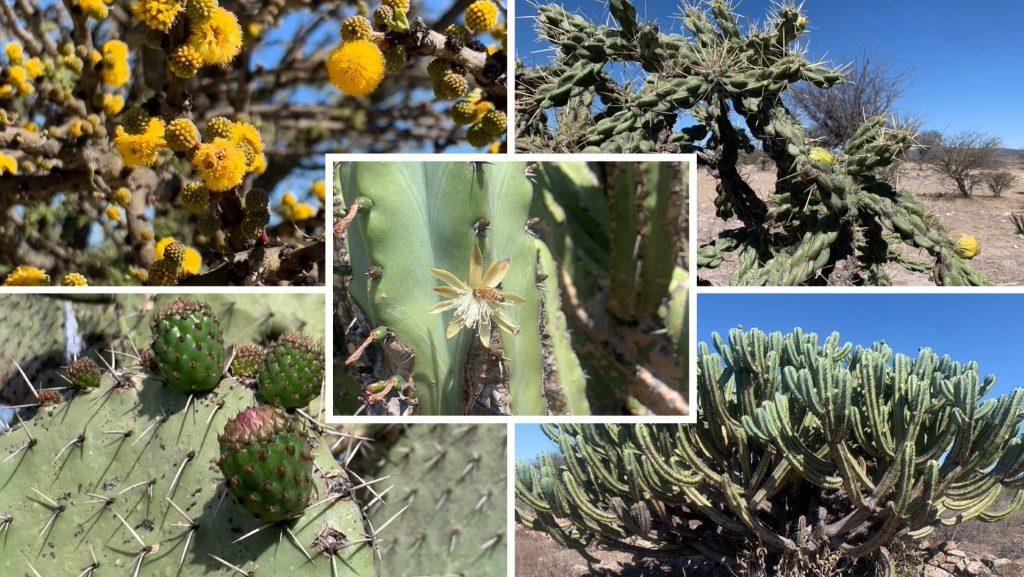
Cacti in bloom, a landscape of hills, desert, traces of the 500-year-old Camino Real to ride on, indigenous communities, hand-worked fields, creeks to ford — all keep riding interesting.
Alberto, the sole proprietor of Bici-Burro, has well-curated mountain bike riding options and is as enthusiastic about the history, natural beauty, and sweet smells of cactus blooms, as he is passionate about mountain biking. He was a sponsor and volunteered at Cronoescalada 2024 – a local mountain biking event. His clients ride customized lime and orange Alubike XTA Team mountain bikes with both inner tubes and tubeless tire sealant. Like braces and a belt to keep pants up! Flat tires are rare! He really knows what he is doing. It is well-worth taking a spin with him!

One day we rode a sweaty 30 km mostly-trail route, which started and finished in the parking lot of a hot spring spa just outside the city. I rid myself of a coating of dust and had a beer at the spa after our ride. Another day I did a 40 km loop with him starting and finishing at his shop in El Centro. We had a shot of mescal to celebrate the end of the ride. Blossoming cacti, culture and history figured prominently during both rides. We gulped water and listened to Alberto during strategic and shaded breaks.
While not a destination for cycling, do ride if you happen to be there. I was there with my spouse. She attended the San Miguel de Allende Writers Conference. I wandered on foot and cycled. We both had a good time!
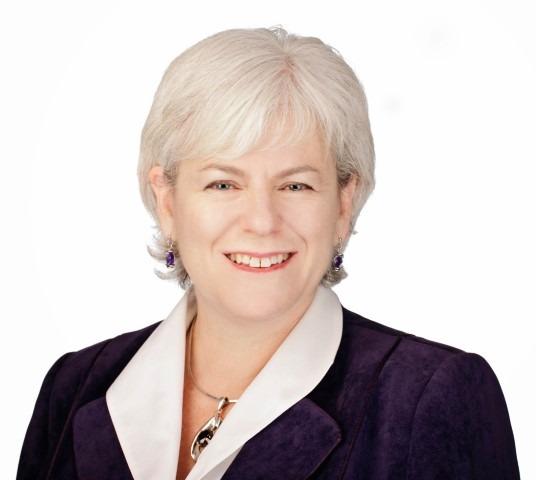
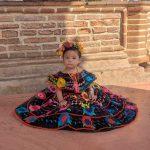
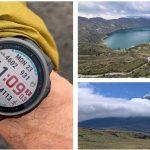
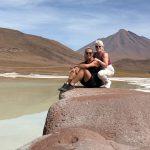
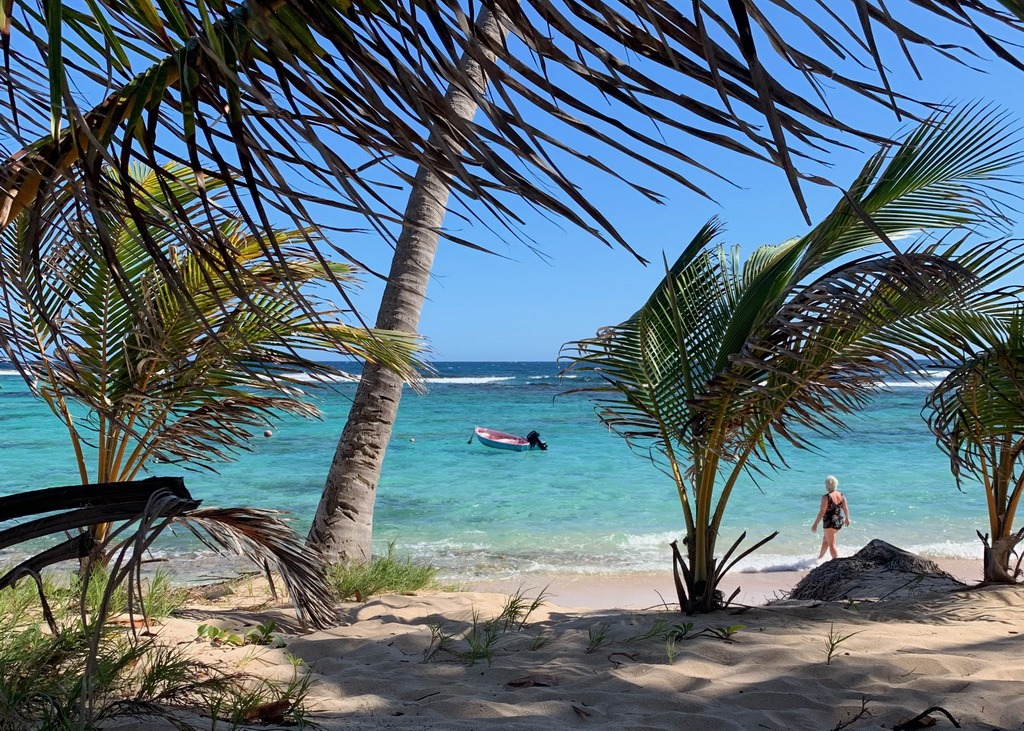
We did ride out and back into town on one of the rides along independencia and north along highway 51. We went mid day so traffic wasn’t a big issue. Cobblestones are more problematic. We = a small group. I’ve ridden bikes in many countries. I didn’t feel unsafe at any point.
Having said that, you might prefer to leave town on: calle Benito Juarez (north east) or Calzado de là estacion (northwest). That way you avoid the busier roads if on your own. Be prepared for variable road quality. I strongly recommend a mountain bike!
Did you ride out of town on your bike….. along hwy 51 or Independencia? Is it risky to ride these major transportation routes to get into/ out of town?